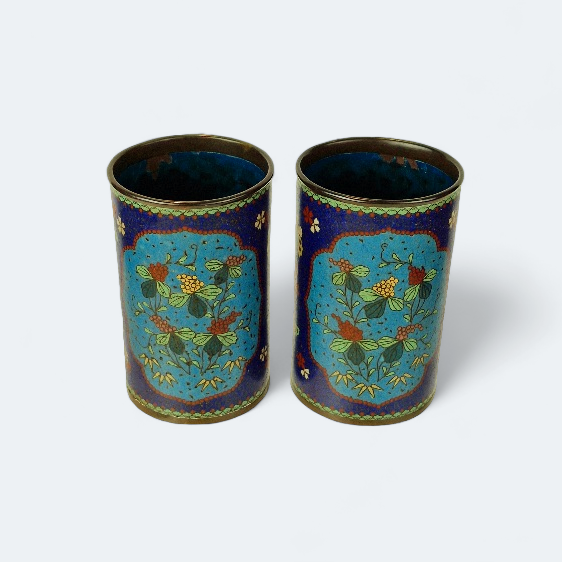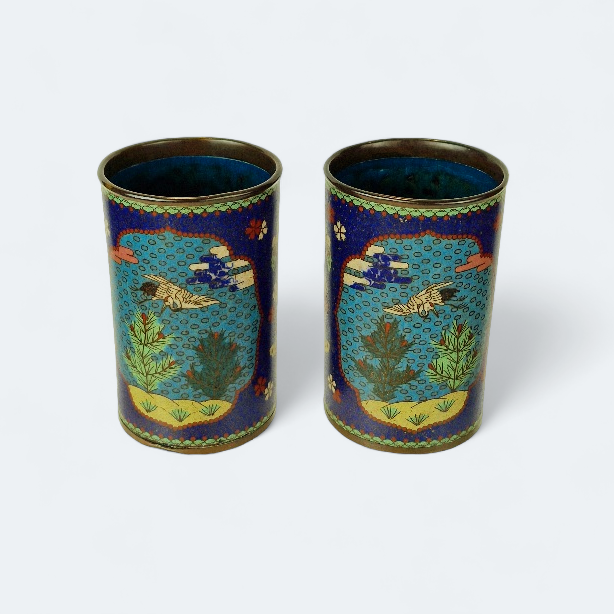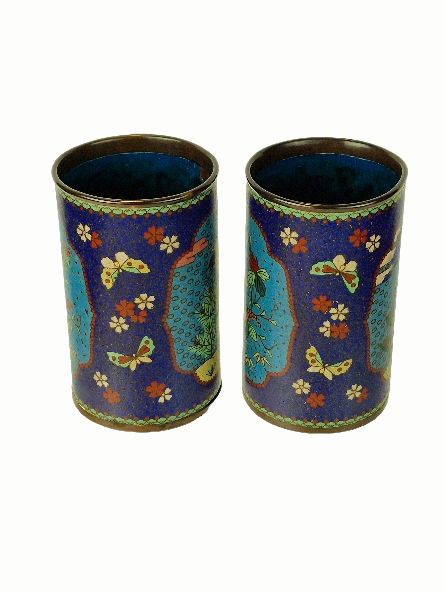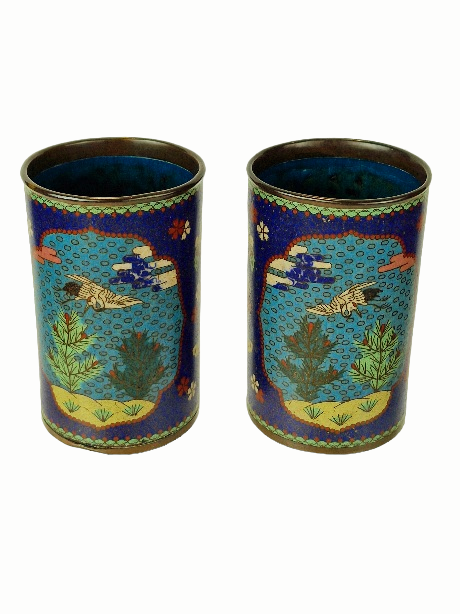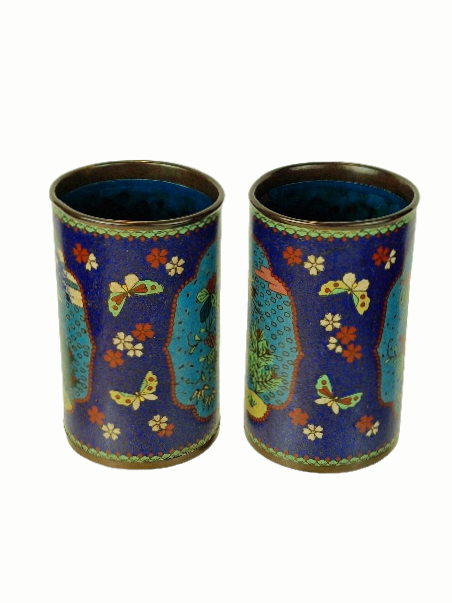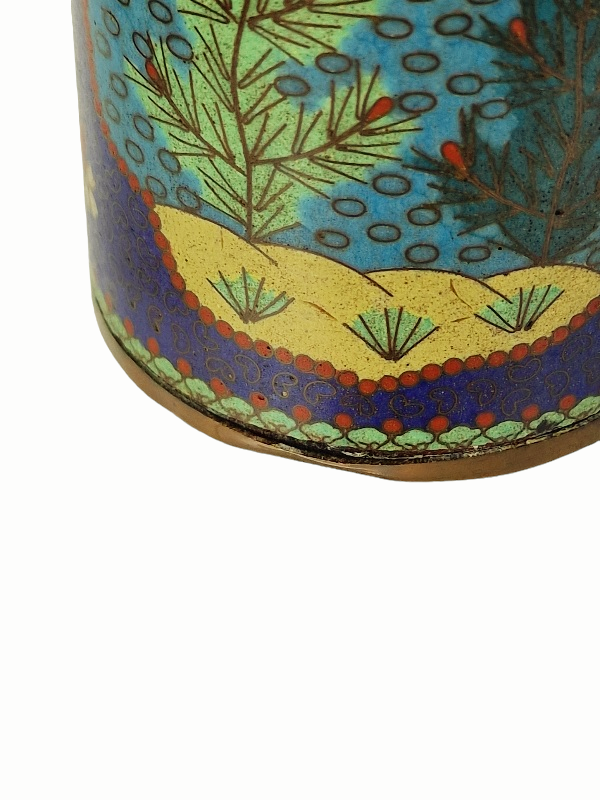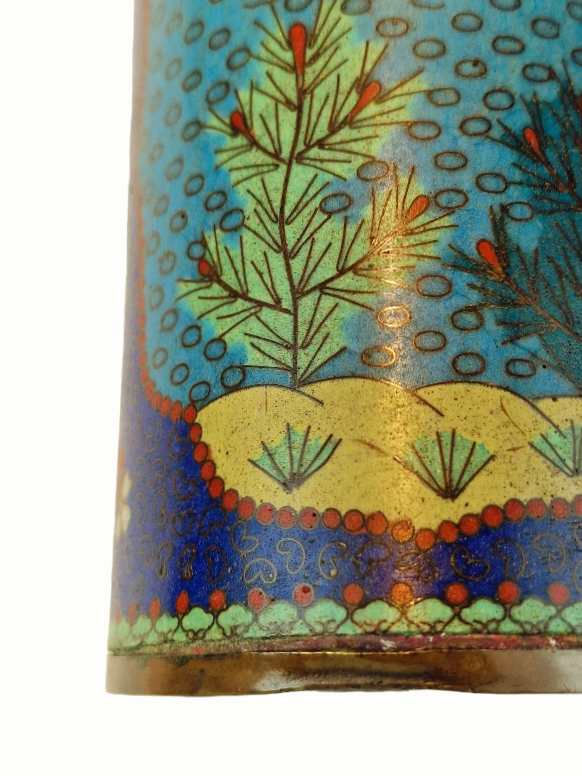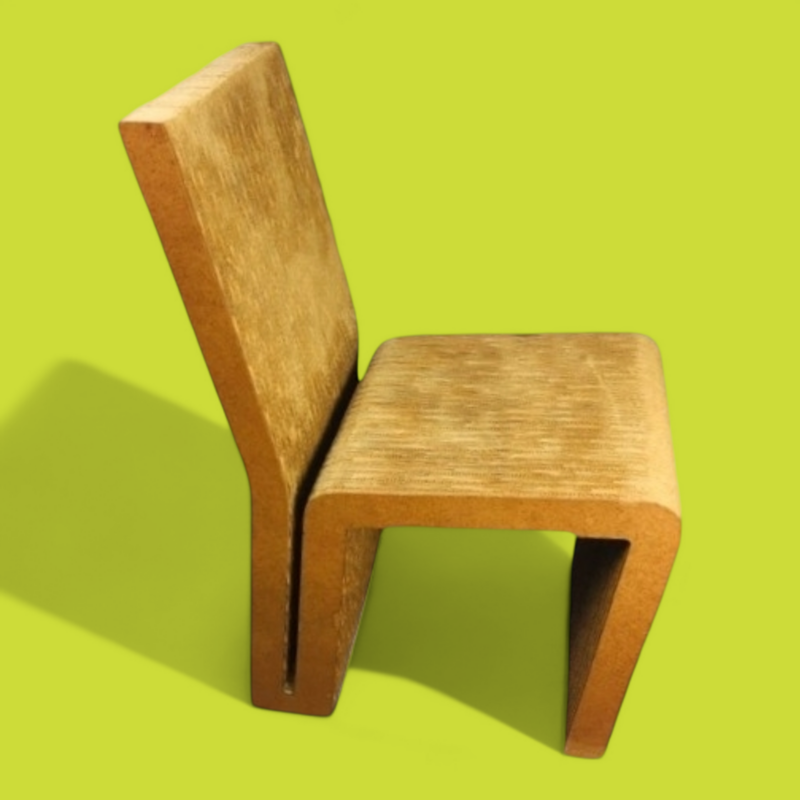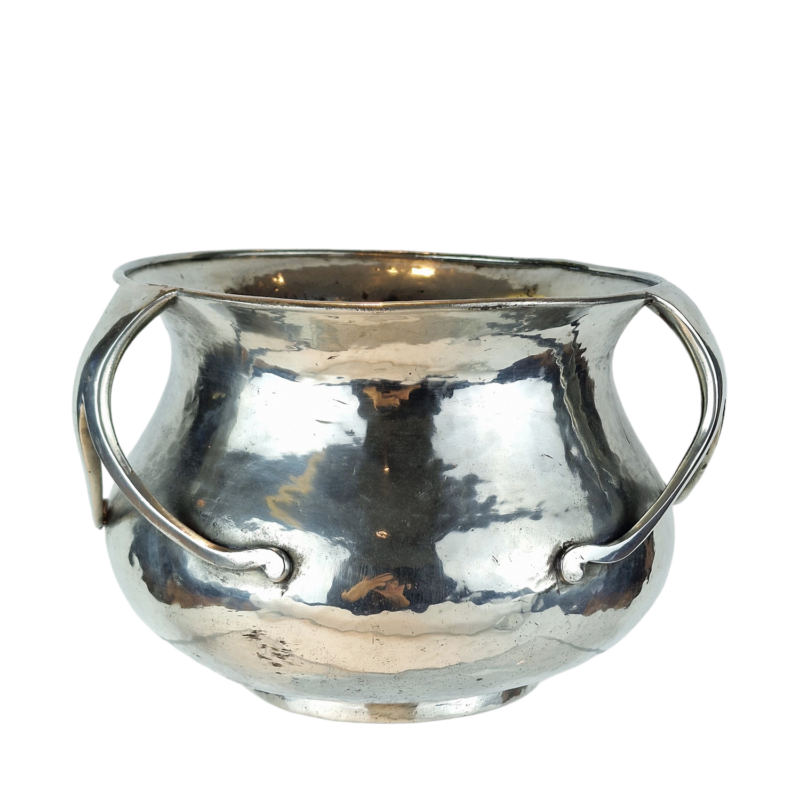Rare pair of beautifully hand decorated 19th Century or early 20th Century Japanese Cloisonne brush pots on bronze, Meiji Period 1868-1913.
Cloisonne is an ancient and highly skilled technique of creating designs on metal vessels with coloured glass paste, known as enamel, placed within enclosures made of copper, called cloisons.
Description
In General
A rare pair of beautifully hand decorated 19th Century or early 20th Century Japanese Cloisonne brush pots on bronze, Meiji Period 1868-1913. The pots have the very attractive benefit of coordinating book matched images (not entirely identical).
In the centre of each pot there are two elegant enamelled Tancho Cranes flying on a turquoise background surrounded by stunning images of flowers, foliage and butterflies together with multiple designs in the border area and background. Many of the designs are stylishly geometric which give the pots a wonderfully contemporary feel. The background colour is royal blue and turquoise with the decoration using a range of vivid colours that have not faded over time. The interior of each pot is covered with cobalt blue enamel. The brush pots have attractive bronze rims.
The Tancho Crane is the biggest of all Crane species and is the among the rarest Cranes in the world. This elegant Japanese Crane with its striking black and white feathers and red crown symbolises happiness and long life in Japan. There is a Japanese legend in which this Crane lives for 1,000 years! This Crane appears in the art and artefacts of ancient Japan.
Cloisonne is an ancient and highly skilled technique of creating designs on metal vessels with coloured glass paste, known as enamel, placed within enclosures made of copper, called cloisons.
Maker and Makers Mark
Typical of this type of Japanese Cloisonne there are no makers mark.
